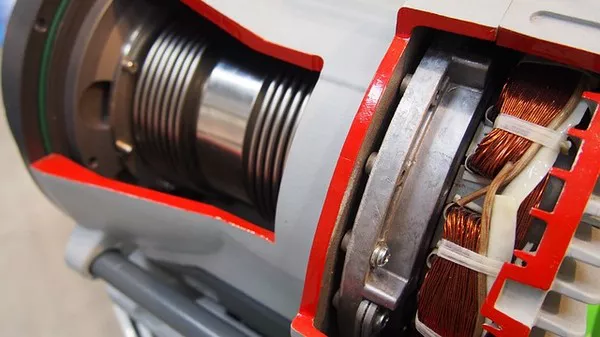In the realm of electrical engineering and equipment, safety is paramount. Whether in industrial settings, commercial spaces, or residential environments, ensuring the safety of electrical devices and systems is critical to preventing accidents, fires, and other hazards. Class 1 electrical equipment plays a significant role in this regard, embodying a specific standard of safety and functionality. This article delves into what constitutes Class 1 electrical equipment, its importance, standards governing its design and manufacture, and its diverse applications across various industries.
Defining Class 1 Electrical Equipment
Class 1 electrical equipment refers to devices and appliances that possess a primary layer of insulation to prevent electric shock, with an additional protective grounding connection. This grounding connection is crucial for diverting excess electrical current away from the user in the event of a fault or malfunction, reducing the risk of electric shock or fire. Essentially, Class 1 equipment ensures that even if a fault occurs within the device, the user remains protected from potentially hazardous electric currents.
Key Features and Components
Class 1 electrical equipment typically exhibits several key features and components to ensure its safety and efficacy:
Primary Insulation: Class 1 equipment incorporates a primary layer of insulation around conductive components, such as wires and circuits, to prevent direct contact with electrical currents.
Protective Grounding: An essential aspect of Class 1 equipment is the inclusion of a grounding connection, often in the form of a third prong in power plugs, which directs excess current safely to the ground.
Metal Enclosures: Many Class 1 devices feature metal enclosures or chassis, providing an additional layer of protection against electrical hazards and electromagnetic interference.
Compliance with Standards: Class 1 equipment must adhere to stringent safety standards and regulations established by relevant authorities, ensuring consistent performance and reliability.
Importance of Class 1 Electrical Equipment
The significance of Class 1 electrical equipment stems from its role in safeguarding both users and property from the potential dangers associated with electricity. By incorporating multiple layers of protection and adhering to strict safety standards, Class 1 devices offer peace of mind in various applications, including:
Industrial Environments: In industrial settings where heavy machinery, high voltages, and complex electrical systems are prevalent, Class 1 equipment is instrumental in mitigating the risk of electric shock, fires, and equipment damage.
Commercial Buildings: From office complexes to retail spaces, Class 1 electrical equipment ensures the safe operation of lighting fixtures, appliances, and other electrical devices, minimizing the likelihood of accidents or disruptions.
Residential Settings: In homes, Class 1 appliances such as refrigerators, washing machines, and ovens play a crucial role in everyday life, providing essential services while prioritizing user safety.
Standards Governing Class 1 Equipment
To maintain uniformity, reliability, and safety across Class 1 electrical equipment, various standards and regulations have been established by international organizations, industry bodies, and government agencies. Some of the prominent standards include:
International Electrotechnical Commission (IEC) Standards: The IEC sets global standards for electrical and electronic devices, including those classified as Class 1 equipment. Standards such as IEC 60335 for household appliances and IEC 60950 for information technology equipment outline safety requirements for manufacturers.
National Electrical Code (NEC): In the United States, the NEC, published by the National Fire Protection Association (NFPA), provides guidelines and regulations for electrical installations, including requirements for grounding, wiring, and equipment safety.
European Norms (EN): The European Committee for Electrotechnical Standardization (CENELEC) develops standards known as EN norms, which govern electrical products sold within the European Union (EU). EN 60335 and EN 60950 are examples of standards applicable to Class 1 equipment in Europe.
Regulatory Authorities: Government agencies such as the U.S. Occupational Safety and Health Administration (OSHA) and the European Union’s Directorate-General for Internal Market, Industry, Entrepreneurship, and SMEs (DG GROW) enforce safety regulations and standards to ensure compliance and protect public safety.
Manufacturers of Class 1 electrical equipment must meticulously adhere to these standards during the design, production, and testing phases to obtain certification and ensure their products meet the required safety benchmarks.
See Also What Type Of Fire Extinguisher For Electrical Equipment
Applications of Class 1 Equipment Across Industries
Class 1 electrical equipment finds widespread applications across diverse industries, playing a pivotal role in ensuring safety, reliability, and compliance with regulatory requirements. Some notable applications include:
Healthcare Sector: Medical devices and equipment used in hospitals, clinics, and diagnostic centers often fall under the Class 1 classification, ensuring patient safety during diagnosis, treatment, and monitoring procedures.
Manufacturing and Industrial Automation: In manufacturing facilities and industrial automation settings, Class 1 equipment powers machinery, control systems, and safety devices, contributing to efficient operations and worker protection.
Telecommunications: Networking equipment, power supplies, and communication devices deployed in telecommunications infrastructure adhere to Class 1 standards to minimize the risk of service interruptions and equipment damage.
Transportation and Automotive: Class 1 electrical components are integral to the functioning of vehicles, railway systems, and aerospace applications, supporting critical functions such as propulsion, navigation, and passenger safety.
Conclusion
Class 1 electrical equipment represents a cornerstone of electrical safety, incorporating robust design principles, protective features, and adherence to stringent standards. Whether in industrial, commercial, or residential settings, Class 1 devices play a vital role in safeguarding users, property, and infrastructure from the inherent risks of electricity. By prioritizing safety, reliability, and compliance, manufacturers and regulatory authorities contribute to a safer and more resilient electrical ecosystem, ensuring the continued advancement of technology and innovation across industries.


